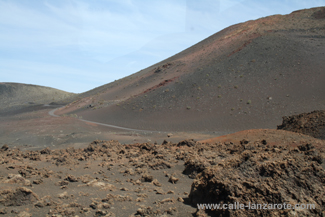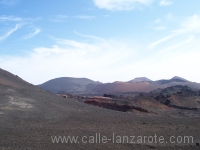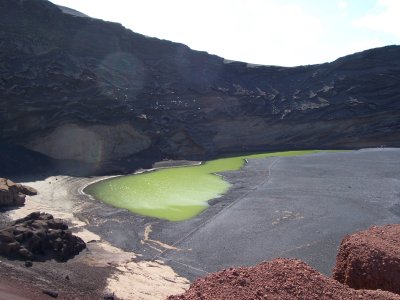Timanfaya National Park
Tuesday, November 1st, 2011 It is perhaps a bit unusual that I had been coming to Lanzarote for 10 years before I finally took the tour of Timanfaya National Park, and for many tourists it is probably one of the first places that they take an excursion to.
It is perhaps a bit unusual that I had been coming to Lanzarote for 10 years before I finally took the tour of Timanfaya National Park, and for many tourists it is probably one of the first places that they take an excursion to.
But for whatever reason, I had only driven past the entrance until now, which does not mean that I had not seen photos and films of what to expect.
The day of our visit must have been a popular choice, because the cars were queued back onto the road (LZ-67) when we arrived. An efficient member of staff was going along the queue, handing out leaflets and enquiring as to the number and age of people in the car. This allowed him to have our tickets ready for us by the time we reached the front of the queue.
 But the queuing was not over here. We then had to wait on the next piece of road to continue up to the car park.
But the queuing was not over here. We then had to wait on the next piece of road to continue up to the car park.
At the car park there were at least three people directing the traffic and making sure that everyone found a parking space as soon as possible. Once we stepped out of the car, one of them immediately asked us which language we spoke and directed us to one of the faded orange coaches that was going to take us around the park. (more…)

 Published on the island itself, it is only a small book – 32 pages long and available in Spanish, English and German.
Published on the island itself, it is only a small book – 32 pages long and available in Spanish, English and German.

